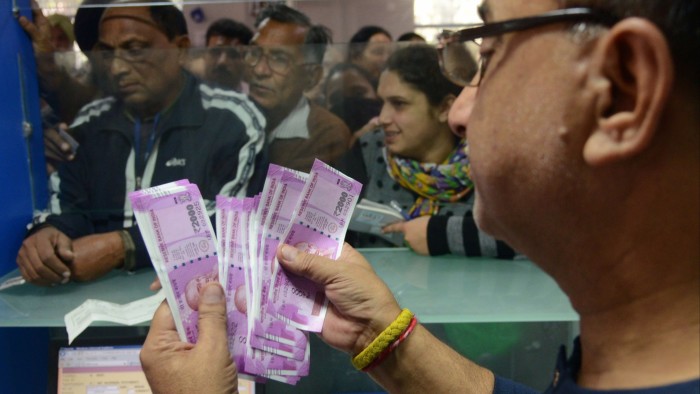Stay informed with free updates
Simply sign up to the Indian business & finance myFT Digest — delivered directly to your inbox.
A sharp slowdown in credit growth — more than a year after India’s central bank intervened to control “exuberant” retail lending — has dented banking sector earnings, with analysts expecting bad debts and credit costs to rise further this year, aggravated by an economic downturn.
On Wednesday, HDFC Bank — India’s largest private lender by market capitalisation — reported a 17 per cent rise from the previous quarter in funds set aside to cover potential bad loans, while its non-performing assets ratio rose to 1.42 per cent from 1.36 per cent.
India Business Briefing
The Indian professional’s must-read on business and policy in the world’s fastest-growing large economy. Sign up for the newsletter here
Axis Bank kicked off the results season for the industry last week. The fourth-largest private sector bank by market value announced a $729mn net profit for its December quarter, missing analyst expectations and sending its shares 8 per cent lower since.
Its retail lending book grew by 11 per cent in the fourth quarter, compared with 27 per cent growth for the same period in 2023. The bank said it had also more than doubled its cover for potential bad loans to $249mn.
Chief executive Amitabh Chaudhry described it as “a tough environment” and said rising delinquencies, especially in unsecured products, had been fuelled by “credit hungriness and over-leverage”.
“Slippages are mainly in our retail unsecured book, largely in cards and personal loans,” he added. “Given the heightened delinquency levels in the industry, we continue to remain cautious in our outlook towards unsecured.”
Analysts had projected similar results for other banks. Across the industry, “there is genuine concern [that] credit growth will drop to single digits”, said Rahul Arora, chief executive of Nirmal Bang Institutional Equities in Mumbai.
The RBI, which launched its crackdown on unsecured lending after millions of Indian households loaded up on easily available credit, said in its financial stability report at the end of December that its measures to curb risky lending were “fructifying”.
The sector’s annual retail lending growth was down from a compound annual growth rate of 26.9 per cent between September 2021 and September 2023 to 13 per cent in September 2024.
“An area of concern, however, is the sharp rise in write-offs, especially among private sector banks, which could be partly masking worsening asset quality in this segment and dilution in underwriting standards,” the central bank noted. In late 2023, the RBI raised the minimum amount of capital that must be held for personal loans from 100 per cent to 125 per cent, to decrease risks.
Concerns about slowing credit — a drag on the economy with the government downgrading expected growth to 6.4 per cent this fiscal year compared to previous estimates of 8.2 per cent — have also made investors wary about the industry.
Some large Indian lenders’ earnings have been more robust. Kotak Mahindra Bank’s shares jumped more than 9 per cent on Monday after it posted a 10 per cent rise in quarterly profit, even as money set aside for potential bad loans increased 37 per cent.
But across the sector, S&P Global Market Intelligence said the market capitalisation of India’s top banks fell in the fourth quarter as “investor sentiment turned sour amid lacklustre credit growth and shrinking margins”. Of the 20 largest banks, 15 lost value compared to the previous quarter.
The Nifty Banking Index, which tracks the stock performance of India’s largest lenders, has dropped 5.3 per cent over the past month — deeper than a 2.3 per cent fall in the country’s blue-chip benchmark Nifty 50 over the same period.
Loan growth had been mainly driven by the non-corporate segment, and business lending had yet to resume, according to Ashish Gupta, chief investment officer at Axis Mutual Fund.
“There are certainly pockets that were overheated and needed to be clamped down on,” he said. “But the other thing is that we should allow some degree of accidents to happen, there has to be some degree of risk-taking in lending.”
The pressures on the industry’s loan book come as India’s banking sector also struggles with tight liquidity, with the RBI ramping up dollar sales to defend the country’s currency. Along with tax outflows, this “magnified the squeeze in recent weeks”, said DBS Bank economist Radhika Rao.
On January 15, the central bank announced it would start conducting daily variable rate repo auctions after the banking system liquidity deficit rose past Rs2tn ($23bn) last week. Those actions were “likely to at least neutralise the draining impact of regular intervention, in the face of global pressure points”, Rao said.



